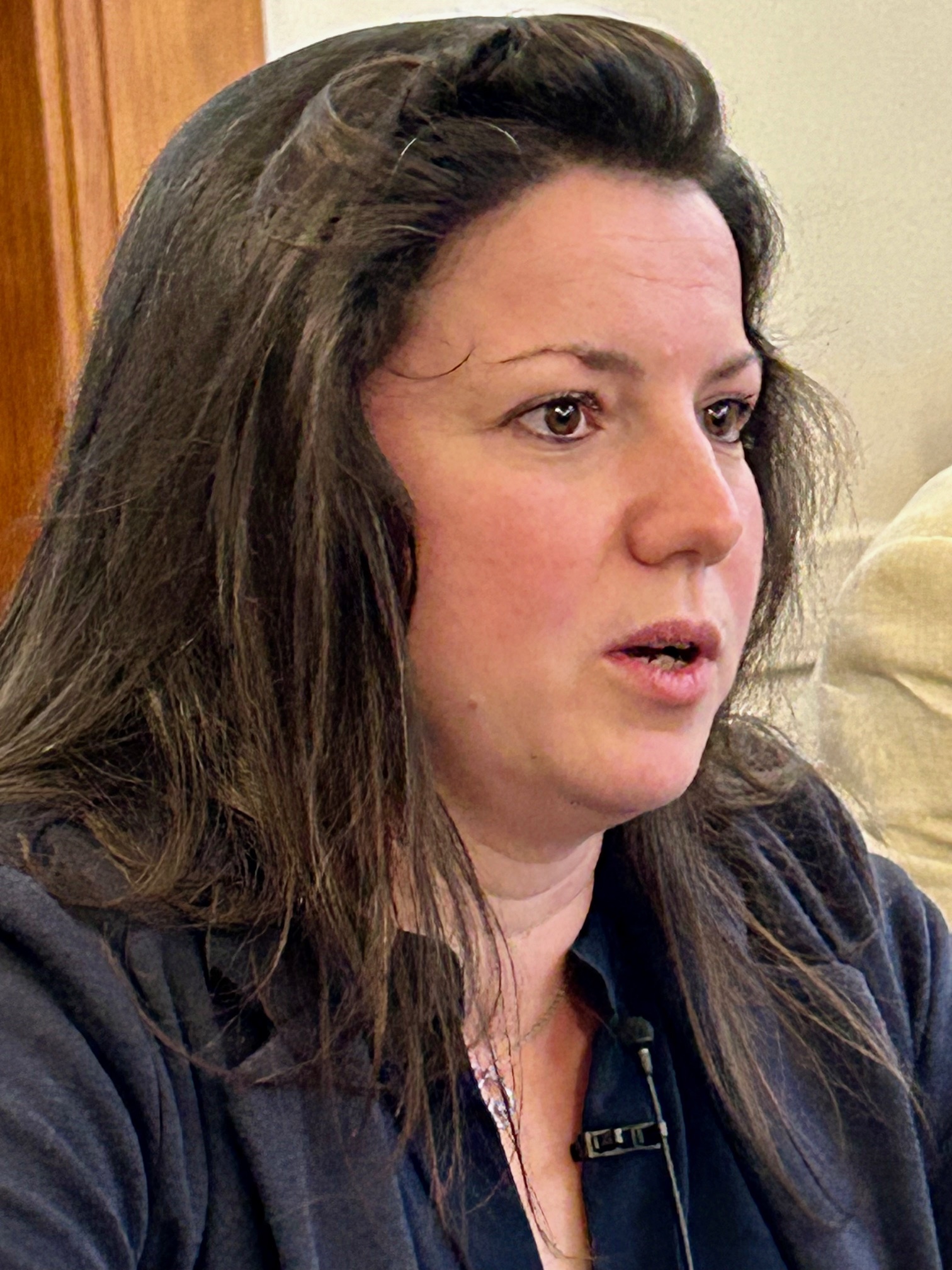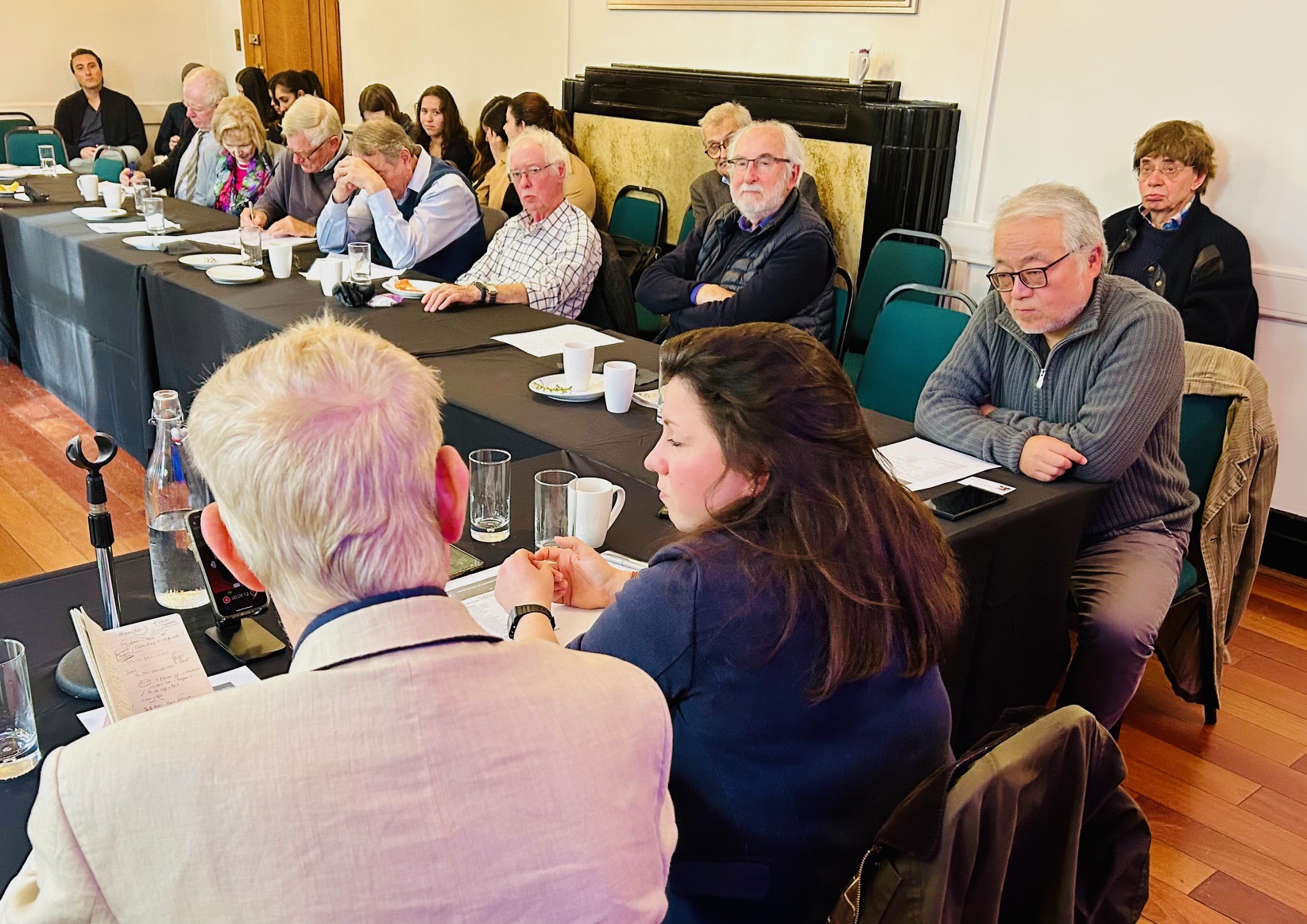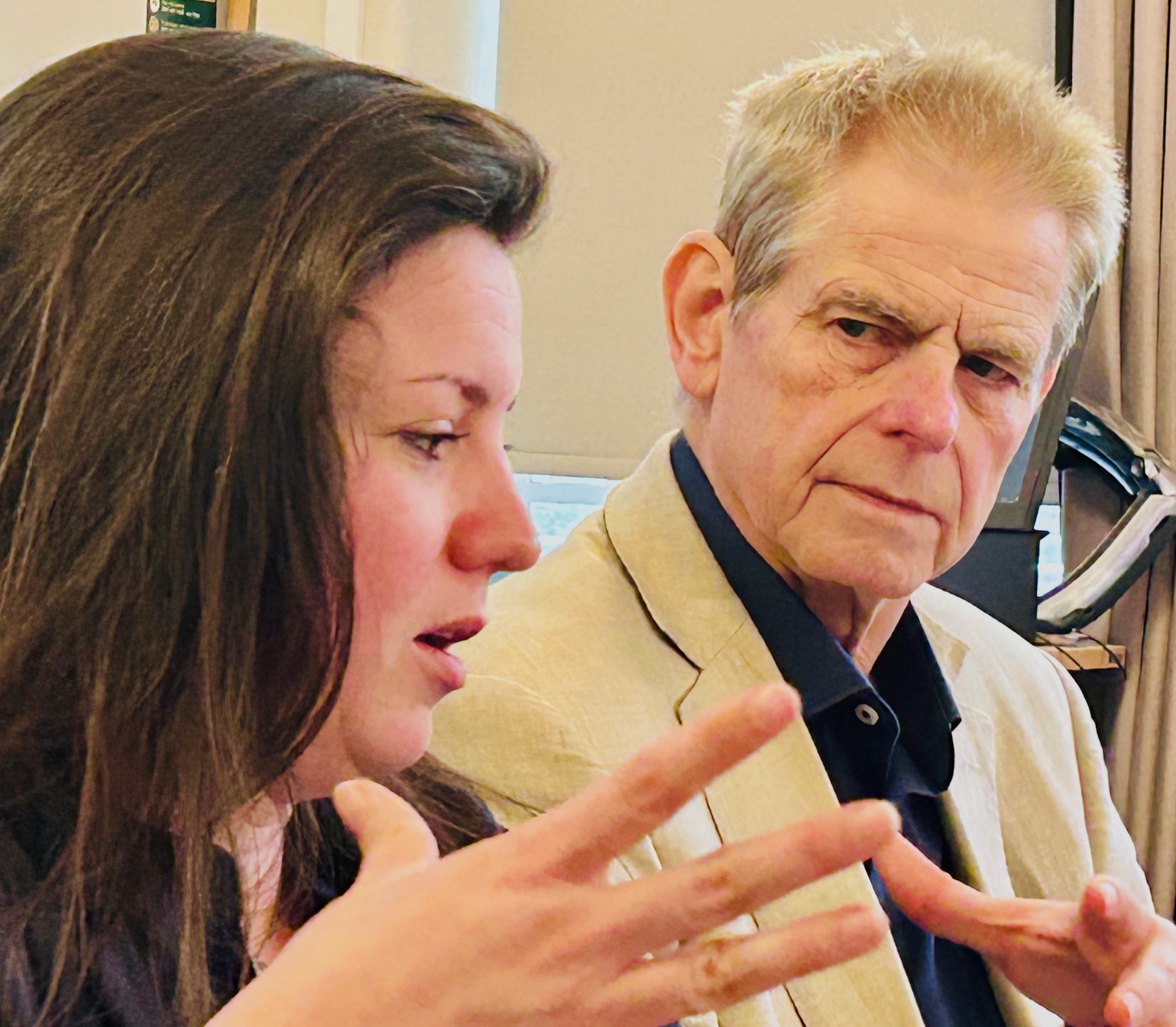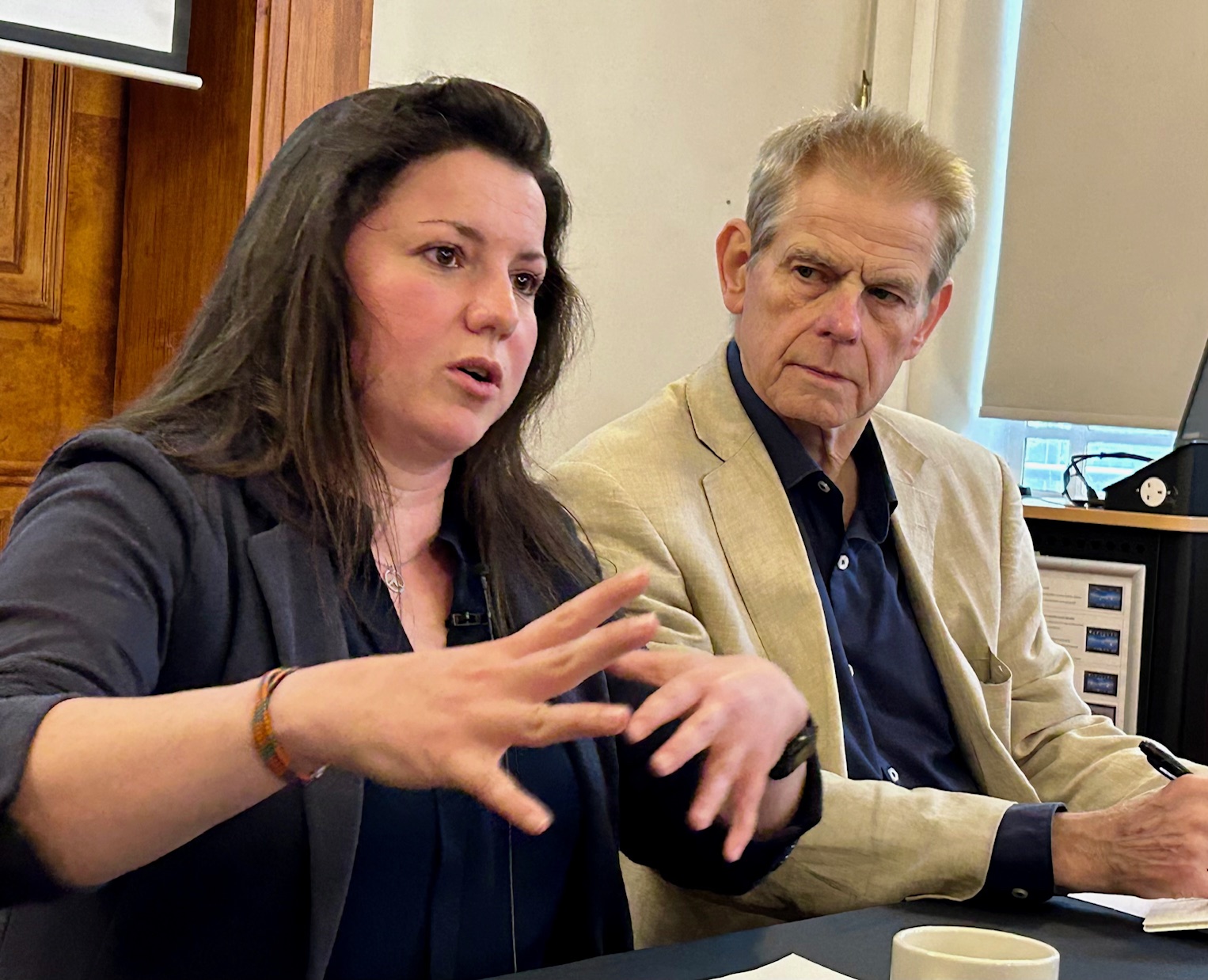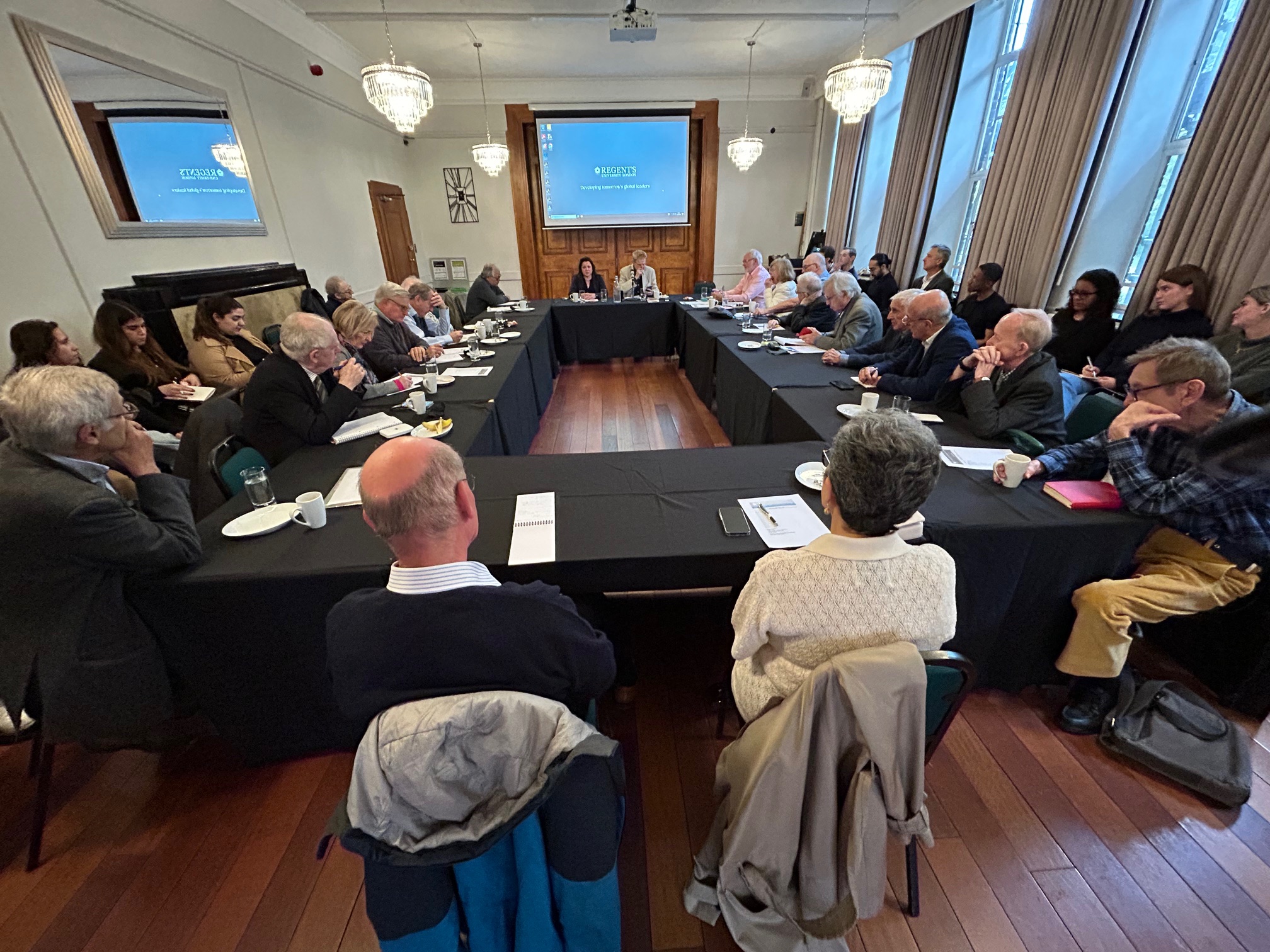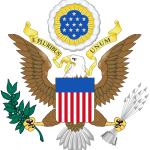What are the alternatives for Germany – and Europe?
Recent unprecedented election gains in regional elections in eastern Germany for the right-wing Alternative für Deutschland party have shocked Germany’s political establishment and observers around Europe.
But should they really be a surprise asks East German-born historian and author Katja Hoyer?
And how will radical parties of both the right and the left change the post-Second World War political consensus and the policies of established parties?
On October 15 Hoyer – a visiting research fellow at King’s College London, columnist for the Berliner Zeitung, and writer for other European and U.S. media, and author of Beyond the Wall: East Germany, 1949-1990 and Blood and Iron: The Rise and Fall of the German Empire, 1871-1918 – briefed the AEJ UK on how these radical parties are winning mass support with harsh anti-immigrant policies and the historical context within which this has happened.
An East wind blows over Germany
A report from William Horsley, AEJ UK chairman and former BBC Germany and Europe correspondent
Katja Hoyer has one foot in what is now the eastern third of today’s united Germany. But today she has dual British and German nationality and mostly feels like “an outsider looking in” on the land where she was born. Aged just four when the Berlin Wall fell in 1989, she grew up in a modest home outside Berlin and attended Jena University during the unhappy and turbulent early years for the “Ossies” that followed reunification. The book she published last year aims to dispel the grey and often patronising image of the life and people of that region painted by the winning side. Hoyer says the current surge in electoral support for the far right AfD party in the east foreshadows social and political trends that can already be discerned in the more prosperous west of the Federal Republic too. An east wind is blowing over Germany, and Europe will feel the chill.
Public opinion polls now make the AfD (Alternative for Deutschland) the most popular political party in the east, and second only to the Christian Democrats (CDU-CSU) nationally. In the three regional elections held since early September the AfD won Thuringia by a thumping 9 per cent margin over the CDU; in Saxony the far right party polled within four per cent of the Christian Democrats; and in Brandenburg the AFD was only narrowly pushed into second place by Chancellor Olaf Scholz’s struggling Social Democrats. For the first time since World War Two, Katja Hoyer says, it’s pretty clear that a far right-wing party will have at least “some impact” on the way Germany is run after the federal elections to be held by September next year.
What is the AfD and who votes for it? Katja Hoyer’s answer is: a mixed bag of “neo-Nazis”, small ‘c’ conservatives, and an awful lot of Germans who feel excluded or left behind. The party has become more savvy since it tried to ride a tide of populist anti-vax campaigns and conspiracy theories during the Covid years. Then, its support never exceeded 15 per cent. But even now the party’s dramatic rise is causing alarm among many in Germany as well as neighbouring countries. Some AfD leaders not only demand drastic border checks and tough asylum laws but hint darkly at reducing Germany’s population by 20 or 30 per cent by excluding those who are “not really German”. And yet, Hoyer says “the AfD is here to stay”.
And how much impact will they have? Already, the rise of new and radical parties makes it a lot harder for the traditional parties to exclude the extremes and form stable coalitions at national and regional level. The days are gone when the CDU-CSU coalition and the SPD regularly captured 80 per cent or more of the national vote between them. In future, the fortunes of the so-called Volkspartei – the CDU-CSU alliance and the Social Democrats – will depend on how they respond to deep-seated dissatisfaction over German voters’ two big concerns. Those are the persistently high immigration and asylum numbers –– and the unfamiliar prospect of economic decline. Since the 19th century, Germany’s winning mercantilist economic model has been based on efficient manufacturing-industry and export-led riches, symbolised by Siemens, Volkswagen and Bosch. But that model is reaching the end of the road.
Last month Germany reinstated border checks at all land crossings on its nine borders to curb migration and tackle crime, prompting sharp rebukes from the leaders of France and Poland. The move is seen by some as an ominous backward step which threatens the concept of free movement among states in the Schengen area – a core principle for believers in the merits of European integration.
These factors all add up to uncertainty about the future, and a loss of confidence among swathes of German voters in the two main political parties which have headed every postwar government of the FRG. Hoyer reckons that Angela Merkel’s dramatic decision in 2015 to let in a million Syrian and others fleeing from bloody wars. hunger or authoritarian regimes might have been accepted if it had been a one-off. Instead, she says, Germany is now home to 3 million people seeking asylum, putting real strain on housing and other resources. In retrospect, Angela Merkel’s 16-year was less about astute pragmatism; now “it looks more like stagnation”.
Analysts say the largest group of AfD voters are skilled or lower middle class workers. For the first time now, that mainstay of the German workforce – the Mittelstand – faces a long-term decline in its status and earning power. They no longer feel the same loyalty to the Social Democrats who used to protect them. Hoyer points to the sweeping deregulation of the labour market under an earlier SPD Chancellor, Gerhard Schroeder. between 1998 and 2005. On top of that comes the more recent and rapid loss of factory jobs, as Germany’s ‘analog’ industries have signally failed to transition to the age of electric cars and a digital world.
Apart from the AFD, the recent elections in the east added another anti-establishment party to this volatile mix. The hastily-formed Alliance Sahra Wagenknecht (BSW) – named after and led by a long-established populist left wing politician – stunned the pollsters by claiming 12 per cent of the vote in Thuringia and 16 per cent in Saxony, gaining a significant presence in those regional parliaments. It too demands generous state provisions for ‘normal families’, employees, smaller businesses and pensioners. Hoyer points out that in parts of the former East German industrial heartland like Chemnitz unemployment is now as high as 50 per cent. But what seems to have propelled the new party to such prominence is its leader’s strident call for Germany to stop sending weapons to Ukraine and instead press for Ukraine to sue for peace by giving up territory to Russia. Chancellor Scholz had already signalled a cooling of his commitment to Ukraine’s defence, seeking to shore up his unpopular party and focus on the everyday concerns of others.
Katja Hoyer knows from her first-hand experience that the Russia-friendly mindset of many Sarah Wagenknecht supporters is especially typical of voters in the eastern states. But she also acknowledges that under successive previous German leaders – including Angela Merkel and Gerhard Schroeder – Germany has often been seen as too close to Russia for the comfort of its allies.
Hoyer the international historian presented a carefully nuanced analysis of the “far right-wing threat” posed by the AfD. She believes the party’s current success does not necessarily mean that Germany is “going far right”. Much depends on the country’s leaders being able to reassure millions of rattled voters that their futures will be secure despite the array of changes affecting their lives. But Hoyer is quick to add: “I didn’t say they (the AfD) were not dangerous”. And, she notes, past experience shows that often “where Germany goes, there goes Europe”.
Katja Hoyer at the AEJ UK on 15 October 2024
